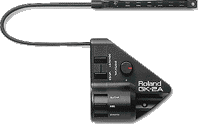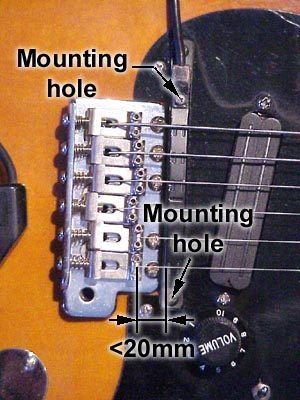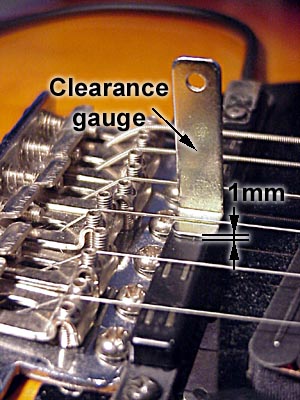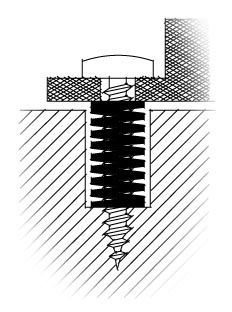

![[Previous Page]](prev_dis.gif)
![[Next Page]](next.gif)
![[Up]](up.gif)
![[Home Page]](home.gif)
![[Mail]](mail.gif)
![[Contents]](contents.gif)


The purpose of this article about installing the GK-2A pickup system is to give an you imagination of the necessary work and to point out, what you have to pay attention to, when installing the pickup system. It doesn't replace the instructions in the GK-2A owner's manual. I strongly recommend to follow those instructions carefully. I will not be liable on what you do to your guitar.
I have installed the pickup system on four different guitars now, so I think, I have made some experience, that could be useful for somebody who wants to install the pickup system or who considers to buy one and is not sure if it is possible to install it on his/her guitar and if it might be a good advice to let the installation be done by a luthier or somebody in a guitar shop.
In my humble opinion, somebody who doesn't have two left ands and five thumbs on each should be able to install the pickup system. The tools required are a drill, a screwdriver (Philips) and a ruler.

Keep in mind, that it is not possible to install the GK-2A on every sort of guitar. The most suitabe type of guitar is a Stratocaster like solid body... a Tele might work too. It is not recommended to install it on any expensive hollow body.
There are two ways of installing the pickup system. One is to glue the divided pickup onto the guitar body. There are spacers and a pickup cushion included that have an adhesive tape on one side. The other method is to drill holes into the body of the guitar and mount the pickup on springs.
The latter method is the better one, since it is more stable and the distance beween the strings can be adjusted with a screwdriver.
The positioning of the devided pickup is a very important thing. A poorly positioned pickup will have a poor tracking, that means the the delay between picking the string and the start of the resulting tone will be high and it can also produce not desired, short tones. You will never have a 100% natural play feel in anyway, but I think, it should be optimized.

The distance beween the point where the guitar strings touch the bridge and the devided pickup shouldn't be more than 20mm (13/16"). The optimal distance for heavy gauge strings is 15mm (9/16"). It should be possible to adjust the heigth so that the clearance between the pickup system and the strings is about 1mm. There is a clearance gauge included in the mounting kit for the GK-2A.

The strings don't need to be aligned perfectly with the center of the magnets, but they should pass over some portion of the magnet. It is important that the divided pickup is oriented in the right direction. The cable attached to it should run out of the side that points to the low E string. Don't laugh, I have made that mistake myself when I have installed it for the first time and I have had at least two people writing me e.mail about their problem and the wrong orientation was the cause (which could be solved easily).
Before drilling the holes, make sure that there is the wood of the body under the positions of the desired holes and not the excavation for the pickups or guitar electronics. Otherwise change the position of the pickup to a more suitable position. I think, it is good to install the pickup as close to the bridge as possible.

It is good to drill a hole with a diameter that is big enough to keep the spring inside and only as deep as the completely compressed spring. This way, you have a place to hide the spring. YOu can drill a whole with a small diameter before, so you have "marked" the exact location of where you want to screw in the screw.
After installing the pickup and adjusting the clearance between it and the strings, you have to adjust the sensitivity of the pickup at the guitar synth you are using. The level display on the synth is ok, but IŽd rather rely on the hearing. All strings should sound as loud as each other.

| [Next] | |
| [Up] | Guitar Synthesizers |
| [Home] | Home Page |
| [Mail] | Send EMail to Sven's Guitar Site |
| [Contents] | Sven's Guitar Site Contents |

Last modified on Monday, 25. September 2017